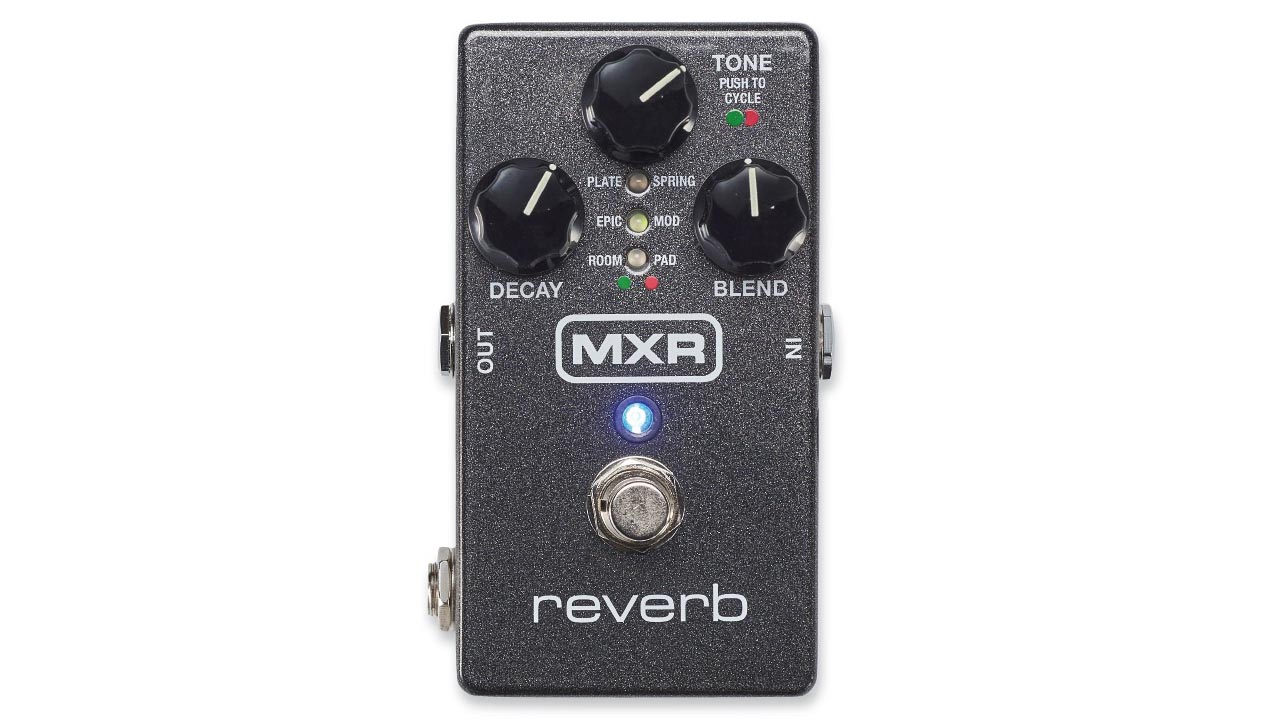MusicRadar Verdict
Given the price, the M300 doesn't offer a whole lot of features over its competitors, but the sound quality puts it firmly among the top shelf of reverb pedals.
Pros
- +
Authentic sounds.
Cons
- -
Awkward stereo setup.
MusicRadar's got your back
The MXR catalogue spans just about every conceivable type of pedal with one noticeable exception: reverb. Until now that is, as we welcome the aptly named Reverb to the party.
Pedal-savvy readers will know that the reverb world is well saturated, with some great options from brands such as Electro-Harmonix (Cathedral), Boss (RV-6) and Strymon (Blue/BigSky). So, what does MXR bring to the table?
The M300 has the usual reverb types you'd expect - plate, spring, room and modulation - as well as two rarer beasts: the Pad setting, similar to octave-up shimmer on other pedals, and Epic, which sounds like a multi-tap delay with added reverb.
MXR might not be breaking new ground here, but all the settings are very usable and offer authentic replications of their designated sizes, thanks to a studio-grade 96kHz sample rate.
Elsewhere, the pedal's expression input is a nice feature, allowing you to blend between reverb settings, but stereo fans may be less pleased with the somewhat cumbersome single TRS stereo jack output and tiny mono/stereo switch that's only accessible on the PCB inside the pedal.
It should also be noted that the various reverb types are accessed by pressing the tone knob - a feature that could cause problems with a misplaced foot on a dark stage.
In summary, the M300 sounds great and delivers a lot of tones from a small footprint.
Want all the hottest music and gear news, reviews, deals, features and more, direct to your inbox? Sign up here.
